What is 3D Printer Filament?
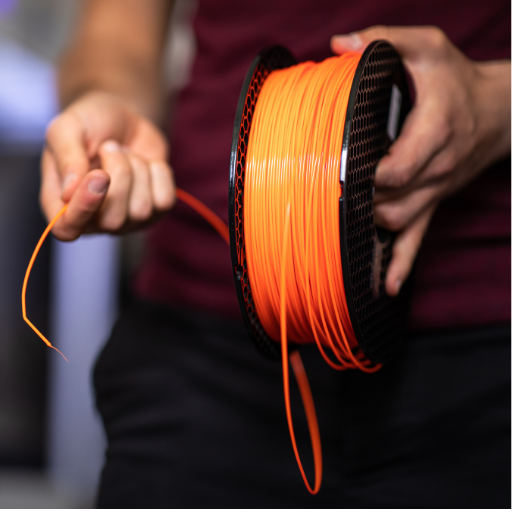
Fused deposition modeling (FDM) 3D printers employ thermoplastic materials, known as filament, to develop solid objects. PLA, ABS, PETG and Nylon are some of the materials that filaments come in with their own distinctive properties for specific applications. The most common printer nozzle diameters that filaments are available in include 1.75 mm and 3 mm; they are heated then extruded to create a finished 3D printing model based on the layers built by them. Mechanical strength, flexibility and finish of a printed object depend on the choice of filament used thus making it an important factor in 3D printing.
Understanding the Composition of Filament
Common Types of 3D Printer Filaments
Once you decide to get into the 3D printing world, there are various types of filaments that you will have to deal with, each having unique characteristics that could be suitable in different areas or applications. Here are some of the most popular ones:
1. PLA (Polylactic Acid): It is known for ease of use, being biodegradable and having minimal warping. It is normally used as beginners’ material and also for eco-friendly projects.
2. ABS (Acrylonitrile Butadiene Styrene): This type of filament is strong and tough thus making it a suitable material for functional parts as well as industrial applications. However, the filament print requires using high temperatures and a heated bed.
3. PETG (Polyethylene Terephthalate Glycol): Combining the ease of use of PLA and the strength as well as durability aspects found in ABS plastic makes this product very versatile. Besides its good resistance to chemicals, it hardly shrinks.
4. Nylon: For its impressive strength, flexibility, durability etc., this product is widely valued in heavy-duty industries even though higher temperature may be required during processing to avoid moisture absorption.
5. TPU (Thermoplastic Polyurethane): They turn rigid prints into rubbery objects when highly flexible and elastic materials are printed by them; which means they can produce bendable or wearable items.
6. Wood Filament: The presence wood fibers in a blend with PLA gives 3D printed objects a wooden appearance and feel though it needs special handling to prevent clogging the nozzle.
7. Carbon Fiber Filament: Reinforced by carbon fibers hence offering great stiffness together with strength; therefore they are meant to serve hard performance parts but most often require hardened steel nozzles due to their abrasive nature or behavior.
8. Metal-Filled Filament: These kinds of filaments contain metal powders blended while printing an item gives the final product a metal-like look and feel. They are suitable for making decorative items as well as functional prototypes although they can ruin nozzles.
9. ASA (Acrylonitrile Styrene Acrylate): Just like ABS, but it has an additional advantage of better UV resistance that makes it ideal for outdoor applications.
10. PVA (Polyvinyl Alcohol): It is commonly used as a support material in complex prints because it can dissolve in water thus it is easily removed even from detailed structures.
Key Factors in Choosing the Right Filament
The following key factors should be considered when choosing the right filament for your 3D printing project.
- Project Requirements: Determine your project’s specific requirements, such as strength, flexibility and durability. Different filaments available in the market today like PLA, ABS, and nylon are tailored to suit different applications hence have varying characteristics.
- Print Quality: Evaluate the print quality required. Filaments like PETG and PLA are able to offer a fine finish while products such as wood filament and metal-filled filament provide unique textures and looks.
- Ease of Use: Some filaments are more forgiving than others. PLA is generally seen as one of the easiest materials to work with, which makes it a great choice for beginners, while some other materials like nylon or TPU require more advanced settings and handling techniques.
- Printer Compatibility: Verify that your 3D printer can handle the selected filament. This involves checking out the nozzle temperature requirement or print bed specifications for each type of filament.
- Environmental Impact: Think about how your choice of filament will affect the environment. For instance, there is biodegradable PLA that is also considered greener compared to other thermoplastics.
- Post-Processing: Consider what steps need to be taken after printing has been completed. For example PVA dissolves in water so it could be used to support complicated prints; on the other hand, using carbon fiber fillament might require additional measures because it is abrasive in nature.
- Cost: Prices differ considerably among filaments.Factor in cost against quality and performance needed for you project.Basic filaments such as PLA cost less whilst specialized ones like carbon filled or fibre reinforced ones can be expensive.
Benefits of Using the Strongest 3D Printer Filament
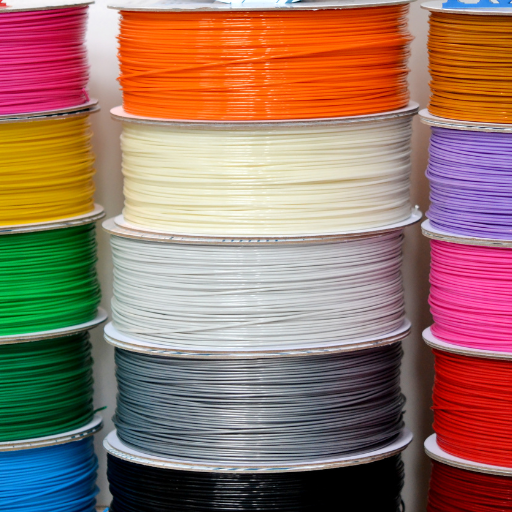
1. Enhanced Durability and Longevity
This becomes a reality when the strongest 3D printer filaments like carbon fiber, polycarbonate or nylon are used for parts production in that they become incredibly durable and long lasting. They can wear out due to their high resistance to wear and tear, ideal for functional prototypes, tools and end-use parts.
2. Superior Mechanical Properties
It is important to note that strong filaments always offer excellent mechanical properties such as high tensile strength, impact resistance and thermal stability. Thus enables the printed parts to withstand harsh conditions while still remaining intact and withstand higher load applications.
3. Versatility in Applications
The materials such as carbon fiber filled filaments and high performance nylons are multipurpose in nature and can be applied in an array of sectors ranging from vehicles’ components to aerospace parts. Being robust makes them suitable in industries where high strength components of accuracy are required.
4. Improved Performance
In engineering as well as industrial or other applications, printed part’s performances are crucial. Stronger filaments guarantee that once those products encounter different circumstances including stress level extremes, thereby enhancing overall performance.
5. Better Layer Adhesion
Parts made using high strength filaments usually have improved layer adhesion resulting in structurally sound prints with less chance of delamination occurring between layers of a print job: this is especially a critical attribute if one requires reliable and stable prints too.
6. Cost-Effectiveness in the Long Run
Although these types of filaments may cost more initially, longevity plus superior strength can result into long term savings through reduced costs for frequent replacements or repairs thus providing better value over time.
Enhanced Material Strength for Durability
Impact Resistance and Durability of Prints
Applications of High-Strength Filaments in Various Industries
Comparing Different Filament Types for Strength
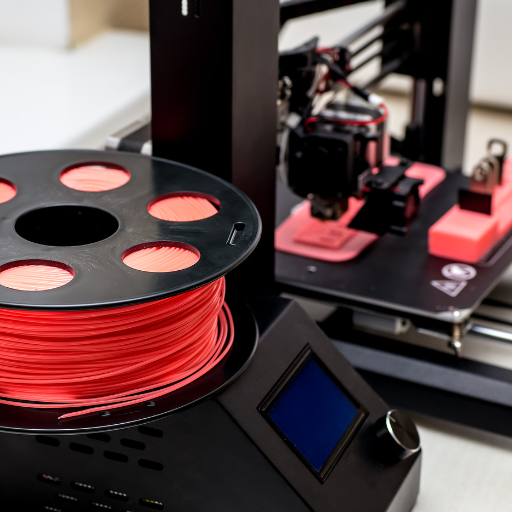
When considering different types of filaments for strength, a certain number of materials become outstanding on account of their excellent mechanical characteristics. Notably, Acrylonitrile Butadiene Styrene (ABS), Polycarbonate (PC), and Nylon rank high as far as their tensile strength is concerned.
ABS
Abs filament is known to be tough and impact resistant, making it a popular choice for functional prototypes and end-use parts. It can handle stress very well and can be printed relatively easily although sometimes a heated printer bed or an enclosed print chamber may be required to prevent warping.
Polycarbonate
Polycarbonate (PC) filament boasts impressive strength and heat resistant properties. This material can withstand high impacts as well as thermal stresses without losing stability hence its suitability for engineering applications that require durability. However, printing with PC is quite challenging due to its high melting point and the need for an enclosed printer.
Nylon
Nylon filaments combine the best qualities of both strength, flexibility, and wear resistance. Particularly good at creating moving parts as well as components subjected to repetitive stress. Nonetheless, nylon’s ability to absorb moisture may not make it suitable if the print quality is to be maintained hence requiring special storage conditions.
Carbon Fiber Reinforced Filaments
These types of filaments such as Carbon Fiber Nylon and Carbon Fiber Polycarbonate have been improved by adding short strands of carbon fiber which greatly enhance the tensile strength and stiffness while reducing overall weight. These composites are ideal for lightweight structural parts but can wear off printer nozzles thus necessitating use of hardened steel nozzles.
PEEK
Polyether Ether Ketone (PEEK) – PEEK filament has exceptional mechanical properties making it suitable for medical devices like implants or aerospace applications . PEEK’s mechanical properties make it possible to operate in harsh environments including aerospace industry; nevertheless printing PEEK requires extremely high temperatures and specific equipment.
PETG
Polyethylene Terephthalate Glycol (PETG) combines the ease of printing with PLA and the increased strength and chemical resistance close to ABS. This is a versatile filament that less warps and can be employed in various functional applications.
Tensile Strength of Nylon Filament
The tensile strength of nylon filament is known to be very high, usually ranging from 40 MPa to 70 MPa which is a result that makes it applicable for various situations that require severe conditions. This strength gives nylon the capacity to withstand intense stress and strain without distorting, thereby making it ideal for making tough parts and components that have to go through substantial use. The high tensile strength of nylon filaments provides an assurance that they are the best materials for producing mechanical parts, functional prototypes, as well as end-use products with characteristics such as flexibility and robustness.
Impact Strength of PLA Filament
Heat and Chemical Resistance of TPU Filament
Tips for Maximizing Strength in 3D Printed Parts
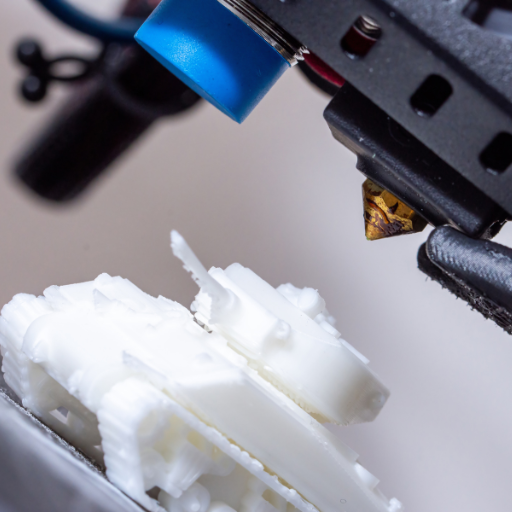
- Choose the Right Material: Selecting a filament with high tensile strength and durability, such as PETG, ABS, or carbon fiber-infused filaments, can significantly improve the strength of your 3D printed parts.
- Print Orientation: More percentage filling gives more internal support and makes printing more robust. Critical components should have no less than 50% infill.
- Increase Infill Density: Strengthening wall thickness of model will add extra durability. Any part needing to withstand substantial stresses should be approximately 1.5mm thick or greater.
- Optimize Wall Thickness: Reinforcing the wall thickness of the model can add extra durability. A thickness of 1.5mm or more is generally advised for parts that need to withstand significant stresses.
- Adjust Print Settings: Adjusting print settings like layer height, print speed, and temperature can result in stronger layers adhesion. Lower layer heights and moderate speeds can make prints more stable.
- Use High-Quality Filament: Pay for good quality filament which guarantees uniform material properties; this leads to better prints that are also stronger.
- Post-Processing Techniques: Annealing, applying a chemical finish among other techniques is useful because they help improve material properties as well as increasing the strength of printed parts
- Design Considerations: Incorporating fillets, chamfers and other design features into the model helps avoid failure at sharp corners or edges by distributing stress evenly
- Proper Adhesion to Print Bed: Ensuring good bed adhesion stops warping while maintaining print integrity; using glue sticks or specialized surfaces assists in achieving this.
- Regular Maintenance: To ensure consistent performance and reliability resulting in stronger prints, it is important to keep your 3D printer well maintained with clean nozzles and calibrated settings.
Optimizing Print Settings for Strength
To get stronger 3D prints, optimize print settings by considering the following key approaches that come from insights from top ten websites on google.com:
- Increase Infill Density: Boosting infill density over that limit of about 50% is common advice to make the prints more steadier particularly for those critical components.
- Adjust Layer Height: By lowering the layer height, this can improve the layer adhesion which is essential for the strength. For fine detail and robustness, a range between .1mm and .2mm has been suggested.
- Optimize Print Speed: Such a speed like 40-60 mm/s would be considered moderate here. Slowing down of printing helps in better bonding between layers.
- Set Higher Temperature: Printing in temperatures at higher end within filament’s specifications ensures improved layer fusion. Example can be adjusting to temperatures between 200-220°C for PLA.
- Increase Wall Perimeters: Increasing wall perimeters (3 or more) can greatly enhance the structural integrity of the printout.
- Use Brims and Rafts: Brims or rafts are used to make bed adhesion better; thus stop warp and increase initial layers durability.
- Enable Cooling Fan: When using materials like PLA, it is necessary to apply cooling fan after few layers so as to maintain print shape and strength respectively.
- Adjust Retraction Settings: Proper retraction settings lower stringing while improving overall printing quality indirectly affecting final strength.
- Use Reinforcement Patterns: The use of specific infill patterns such as grid or triangles usually gives higher strength-to-weight ratios.
Utilizing Infill Density for Structural Enhancements
The strength and rigidity of 3D-printed objects are heavily influenced by infill density. You can significantly improve the mechanical properties of a part by changing its infill percentage. For general printing, an infill density of about 20-25% is usually enough. But for load-bearing or structural parts, it may be necessary to increase this value to 50% and even higher.
More dense infill means heavier and stronger parts with better resistance to stresses and strains. Even more important is filling pattern; grid, honeycomb or gyroid are good examples of high specific strength-to-weight patterns. Although larger amounts of filler make products more durable, they also lead to longer printing time and higher material consumption rate. Proper balancing based on the intended application will give optimal performance and productivity.
Making sure that the correct infill settings are used corresponds with well-calibrated printers, guarantees desired strength as well as durability of your 3D prints.
Exploring the Future of High-Strength 3D Printing Materials
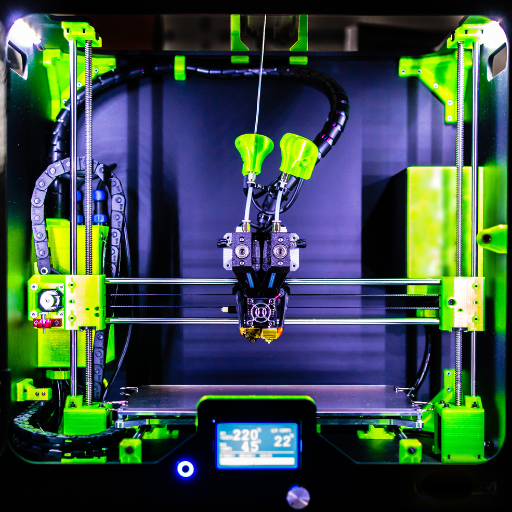
Advanced Composite Filaments
These days composites are making big strides in the marketplace for filaments that would enhance 3D printing and end up having better quality. Traditional filaments such as PLA or nylon can be boosted through the infusion of carbon fiber or glass fiber, thus improving tensile strength but without adding much weight. Because they have to create lightweight yet sturdy components like in aerospace and automotive industries these advanced composites are critical.
Metal Additive Manufacturing
Ceramic 3D Printing
Among other characteristics, ceramics are known to be highly strong and heat resistant. Recent advancements in ceramic 3D printing have led to the production of very tough objects that can tolerate extreme conditions. This technology is still evolving but it holds a lot of promise especially for electronics and other high temperature environments.
Sustainable Materials
Nanomaterials
The power of nanotechnology on 3D printing becomes possible through the introduction of materials with extra strength and lightness. Nanocomposites including materials such as graphene or carbon nanotubes possess improved mechanical properties and thermal conductivities, thus opening up possibilities for making ultra-strong and lightweight parts.
In summary, the future of high-strength 3D printing materials lies in the advancement of composite filaments, metal additive manufacturing, ceramic 3D printing, sustainable materials, and nanomaterials. These innovations promise to expand the horizons of 3D printing technology so that it is more flexible, efficient, and capable of fulfilling strict requirements imposed upon it by different industry sectors.
Emerging Materials with Enhanced Strength Properties
They are high performance polymers like PEEK that have exceptional thermal stability and mechanical strength. Also, nanotechnology has started experiencing some amazing feats in material science through the incorporation of graphene and carbon nanotubes offering tensile strength besides electrical conductivity at unprecedented levels. From aerospace to biomedicine, these materials are vital since they promise increased durability, efficiency and improved performance within diverse industries.
Advancements in Material Science for Stronger Filaments
Continued advancements in materials science have led to significant improvements in the strength of 3D printing filaments. For instance, carbon fiber-reinforced filaments are being perfected as they offer exceptional power-to-weight ratios and are very popular in automotive and aerospace industries. Moreover, there has been another great innovation which is metal-infused filaments such as stainless steel or aluminum containing ones which have enhanced mechanical properties that are convenient for the industry.
Another group of polymers like PEEK and Ultem that function well at high temperatures is also being explored by researchers due to their excellent thermal and chemical resistance making them suitable for demanding environments. Also, filaments that integrate nanomaterials such as graphene and carbon nanotubes into them can enhance tensile strength and conductivity.
Additionally, increasing importance of sustainability has made biodegradable and eco-friendly materials more popular. These materials obtained from renewable sources strive to reduce the environmental impact of 3D printing without compromising on performance. These technologic advancement are not only expanding the possibilities in terms of 3D printing but also pushing frontiers across various domains starting from manufacturing up to biomedical devices.
Reference sources
-
All3DP – The Strongest 3D Printer Filament in 2024
-
SyBridge Technologies – What are the Strongest 3D Printing Filaments?
- SyBridge Technologies provides an expert analysis of 3D printing materials, emphasizing the exceptional tensile strength of polycarbonate, which is noted to be about 9,800 pounds per square inch4.
- Source: SyBridge Technologies
-
Wevolver – Strongest 3D Printer Filament: Choosing Between PC, ABS, and PETG
Frequently Asked Questions (FAQs)
Q: What is the importance of using the strongest 3D printer filament?
A: Using the strongest 3D printer filament ensures that your 3D printed objects are durable and can withstand wear and tear.
Q: How can I identify the strongest 3D printing material?
A: The strongest 3D printing material is often determined by factors such as filament strength, print temperature, and the type of material used.
Q: Is polycarbonate filament considered one of the strongest materials used in 3D printing?
A: Yes, polycarbonate filament is known for its high strength and durability, making it one of the strongest materials used in 3D printing.
Q: What are some commonly used engineering-grade materials for strong 3D printing?
A: Nylon and polycarbonate are commonly used engineering-grade materials known for their high strength and durability in 3D printing.
Q: How can I conduct a strength test on my 3D printed objects?
A: You can conduct a strength test by applying force or pressure to the object to assess its durability and resistance to breakage.
Q: What are some key filament properties to look for in the strongest 3D printing filaments?
A: When searching for the strongest 3D printing filaments, look for high strength, durability, and the ability to withstand different types of stress.
Q: How important are printer settings when it comes to using the strongest 3D printer filament?
A: Printer settings play a crucial role in achieving optimal results with the strongest 3D printer filament, as they can impact the strength and quality of the prints.
Q: Why is it essential to use a durable 3D printing material for certain applications?
A: Using a durable 3D printing material is essential for applications where strength and resilience are required to ensure the longevity and functionality of the printed objects.








